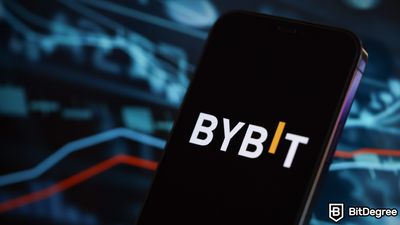Key Takeaways
- Staking crypto is a way to earn passive income by investing your assets to maintain the blockchain network operations.
- Crypto staking only works on cryptocurrencies that operate on a Proof-of-Stake model.
- Staking crypto is generally considered to be less risky compared to other crypto investment methods.
Stop overpaying - start transferring money with Ogvio. Sign up, invite friends & grab Rewards now! 🎁
Staking crypto is one of the most popular ways to earn passive income in the world of digital currencies. But what is staking crypto, and how does it work? In this article, I will try to answer "what does it mean to stake crypto?" by discussing its mechanics, the associated benefits and risks, and the essential steps to start staking crypto.
To strengthen your understanding of this topic, I will also touch on the best practices to secure your crypto-staking setup and what's on the horizon for the crypto-staking landscape in terms of technological advancement and regulations. Additionally, we'll look at reviews of popular staking platforms like Binance, Kraken, and Coinbase to help you find the best fit for your staking needs.
Without further ado, let’s dive in!

Did you know?
Subscribe - We publish new crypto explainer videos every week!
How Can You Earn Money With Axie Infinity? (AXS Animated Explainer)


Table of Contents
- 1. What is Staking Crypto?
- 1.1. How Staking Crypto Works
- 2. Benefits of Staking Crypto
- 2.1. Earning Passive Income Through Staking Rewards
- 2.2. Improving Blockchain Networks
- 2.3. Comparison With Other Crypto Investment Methods
- 3. Risks Involved in Staking Crypto
- 3.1. Volatility of Cryptocurrency Markets
- 3.2. Risks of Validator Duties and Slashing Penalties
- 3.3. Liquidity Issues and Lock-Up Periods
- 4. How to Start Staking Crypto: Essential Steps
- 4.1. Choosing the Right Cryptocurrency to Stake
- 4.2. Selecting a Staking Platform or Running Your Own Validator
- 4.3. Setting up a Crypto Wallet and Hardware or Software
- 5. Review of Popular Crypto Staking Platforms
- 5.1. Binance
- 5.2. Coinbase
- 5.3. Kraken
- 6. Best Practices for Secure Staking
- 6.1. Tips on Securing Your Staking Setup
- 6.2. Using Hardware Wallets for Increased Security
- 7. Future of Staking in Crypto
- 7.1. Potential Regulatory Changes and Their Impacts
- 8. Conclusion
What is Staking Crypto?
So, what is staking crypto, and why is it gaining so much attention? Essentially, staking crypto is a process used in certain types of cryptocurrencies that operate on a Proof-of-Stake (PoS) model. This method is an alternative to the energy-intensive Proof-of-Work system used by Bitcoin.
Latest Deal Active Right Now:But what does it mean to stake crypto? It means that you are holding onto a certain amount of cryptocurrency and participating in network operations, such as transaction validation. Staking crypto is about supporting the network's security and operations while earning rewards in return. When you engage in staking crypto, you lock up your coins in a wallet to serve as a validator on the network.
Validators are chosen at random to create blocks and validate transactions; if they propose or attest to a block that is added to the blockchain, they receive rewards in the form of additional coins from the network.
The process of staking crypto not only helps secure the network but also offers a way to earn passive income without needing to invest in expensive hardware. It’s a win-win for those looking to increase their crypto holdings while contributing to the stability and functionality of the blockchain they support.
How Staking Crypto Works
Staking crypto is a bit like putting your digital currency to work for you. It’s a process that involves locking up a portion of your cryptocurrency holdings to support the operations and security of a blockchain network.
When you stake crypto, you’re essentially depositing your coins into the network as a form of security, which helps to maintain the integrity and functionality of the blockchain. In return, the network grants you the chance to participate as a validator. Validators are responsible for verifying transactions and adding new blocks to the blockchain.

Take, for example, the Ethereum network, which uses a PoS mechanism. When you stake your Ethereum, you might be chosen to validate transactions and propose new blocks. If the block you propose is accepted and added to the chain, you earn additional Ethereum as a reward.
So, what does it mean to stake crypto in terms of network health? By staking, you contribute to the overall security of the network. A larger pool of staked coins increases the network’s resilience against attacks, as manipulating the blockchain would require a bad actor to obtain and stake a significant amount of the cryptocurrency, which is financially prohibitive.
Crypto staking not only incentivizes participants with potential rewards but also plays a crucial role in the governance of certain blockchains. Stakers can often vote on network upgrades and changes, their voting power proportional to their staked holdings. This creates a decentralized governance structure that aligns the interests of participants with the health and evolution of the network.
Benefits of Staking Crypto
Crypto staking is popular because it has many potential benefits. So, why should you consider this crypto investment method? Here are two main benefits of staking crypto and how it compares to trading and mining.
Earning Passive Income Through Staking Rewards
Staking crypto is a fantastic way to earn passive income through what's called staking rewards. As I mentioned earlier, when you engage in crypto staking, you lock up a portion of your digital currency to support the operation and security of a blockchain network. In return for this commitment, the network compensates you with staking rewards.
These staking rewards are essentially additional coins that you earn for your role in validating transactions and maintaining the network's integrity. The amount of staking rewards you receive typically depends on how much cryptocurrency you have staked and the length of time you commit it. It's similar to earning interest in a savings account, but in this case, your earnings come from participating in the digital ecosystem.
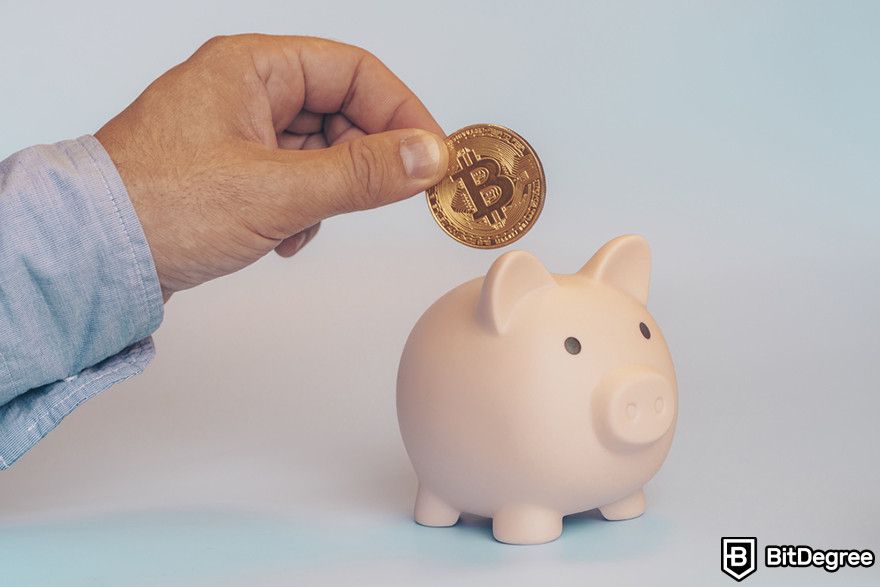
Moreover, staking rewards serve as an incentive for holders to keep their coins staked, which enhances the security and stability of the blockchain. By staking crypto, not only do you help safeguard the network, but you also have the opportunity to grow your holdings through these rewards, making it a potentially lucrative aspect of cryptocurrency investment.
Improving Blockchain Networks
Staking crypto plays a crucial role in enhancing the security and efficiency of blockchain networks. Tokens are not only used for transactions as digital forms of payment but they are also often staked to help run the underlying blockchain or to encourage economic activities and growth within the network[1]. By doing so, those who stake their tokens can earn rewards.
To illustrate with a hypothetical example: if Bitcoin were to adopt staking, holders could "stake" their Bitcoins to become part of the network’s consensus mechanism. Their staked Bitcoins would help validate transactions and create new blocks, contributing to the blockchain's security and efficiency.
However, it’s important to note that staking Bitcoins isn’t possible in the traditional sense, as Bitcoin uses a Proof-of-Work system rather than Proof-of-Stake.
In this way, crypto staking not only secures the network by distributing the validation process but also enhances efficiency by ensuring that those who have a stake in the network are directly involved in its maintenance. This system incentivizes stakers to maintain network integrity, as their own holdings could lose value if the network were compromised.
Comparison With Other Crypto Investment Methods
Staking crypto offers a distinct approach to earning from your cryptocurrency holdings compared to trading or mining. In essence, staking crypto is more passive; once you've staked your asset, you can sit back and collect rewards based on how much and how long your stake is.
In contrast, trading crypto is much more active and involves buying and selling cryptocurrencies on exchanges to profit from price fluctuations. This method requires constant market analysis and can be quite risky, depending on the volatility of the market.
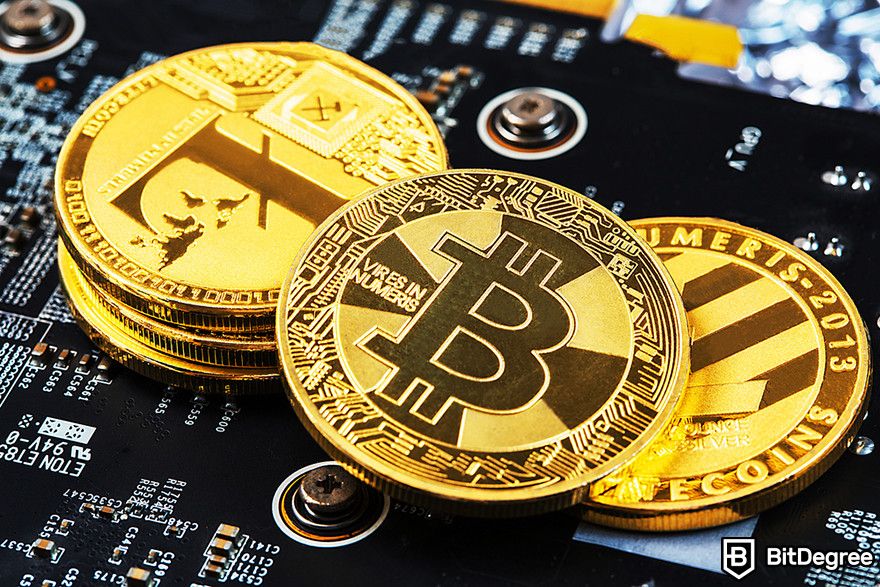
Crypto mining, another traditional form of crypto investment, involves using powerful computers to solve complex mathematical problems that validate transactions and create new blocks. However, mining can be costly due to the high expenses of electricity and specialized hardware.
In essence, staking crypto is generally less resource-intensive and risky compared to mining, and it requires less active involvement than trading, making it an attractive option for those looking to earn passive income from their crypto investments.
Risks Involved in Staking Crypto
Although it comes with many benefits, staking crypto also has some potential risks. Let's take a look at what you need to look out for when participating in this popular crypto investment method.

Did you know?
Subscribe - We publish new crypto explainer videos every week!
Sidechains in Crypto Explained EASILY (Animated)


Volatility of Cryptocurrency Markets
One of the inherent risks involved in staking crypto is the volatility of cryptocurrency markets. The value of cryptocurrencies can swing wildly due to various factors such as negative news[2], technological advancements, or market sentiment. This volatility affects staking crypto because the rewards you earn are typically in the same cryptocurrency that you stake.

For example, if you're staking crypto in a coin that suddenly drops in value due to market fluctuations, the value of your staking rewards drops as well. Essentially, even if the number of coins you earn as rewards remains consistent, their market value can decrease dramatically, impacting the real return on your investment.
Furthermore, if you decide to withdraw and sell your staked assets to cut losses during periods of high volatility, you may face additional penalties or a loss in staking rewards depending on the terms set by the staking protocol. This aspect makes crypto staking a bit of a double-edged sword: it offers the potential for earning passive income but comes tethered to the whims of the highly unpredictable crypto market.
Risks of Validator Duties and Slashing Penalties
When you're involved in staking crypto, especially if you choose to become a validator, you take on significant responsibilities. Validators play a crucial role in maintaining the blockchain's integrity by verifying transactions and creating new blocks. However, this comes with its own set of risks, primarily in the form of slashing penalties.
Slashing penalties are serious consequences that validators face if they fail to perform their duties correctly or attempt to corrupt the network. For example, if a validator is offline when they are supposed to validate a transaction or sign off on a fraudulent transaction, part of the crypto they have staked as collateral might be "slashed" or permanently taken away as a penalty.

This risk underscores the importance of reliable and continuous operation when engaging in crypto staking. If your equipment fails or your internet connection is unreliable when you are running your own validator, you could lose not just potential earnings but also a portion of your staked assets. It’s a critical consideration that adds an extra layer of risk to staking crypto, emphasizing the need for vigilance and technical readiness.
Liquidity Issues and Lock-Up Periods
One practical challenge you might face when staking crypto is dealing with liquidity issues and lock-up periods. Here’s what that means: when you stake your cryptocurrency, it’s not just sitting idle; it’s actively used in the blockchain to validate transactions. Because of this, your staked assets are locked up and not immediately accessible for trading or selling.
This lock-up period can vary widely depending on the blockchain or the specific staking protocol. It might be a few days, or it could stretch into weeks or even months. If the market takes a dramatic turn or if you suddenly need cash during this period, you can’t just withdraw your crypto instantly.

This lack of liquidity can be a significant risk in crypto staking. Essentially, while your digital assets are working for you, earning staking rewards, they’re not readily available to respond to market changes or personal financial needs. This is something to consider seriously when you decide how much and where to stake your crypto.
However, keep in mind that not all forms of staking involve lock-ups. For example, you can opt for liquid staking which provides more liquidity and flexibility compared to traditional staking.
How to Start Staking Crypto: Essential Steps
So, we've covered the basics of what it means to stake crypto as well as its pros and cons. Now, you might wonder what you need to do when you want to start staking crypto. Here are three essential steps to follow to improve your crypto staking success.
Choosing the Right Cryptocurrency to Stake
Choosing the right crypto to stake is a crucial first step when you dive into crypto staking. After all, what is staking crypto if not a commitment of your digital assets for a period? It's not just about locking up any cryptocurrency; it’s about selecting one that aligns with your investment goals, risk tolerance, and the rewards it offers.
When you're picking a cryptocurrency for staking, consider a few key factors. Look at the stability and reputation of the coin. Has it been around a while? Does it have a strong community and solid backing? These aspects can indicate a safer bet for staking crypto.
It is also important to consider the availability of crypto on the platform you wish to use. For example, Binance.US Staking supports 18 cryptocurrencies, including BNB, ADA, and ETH at the time of writing.
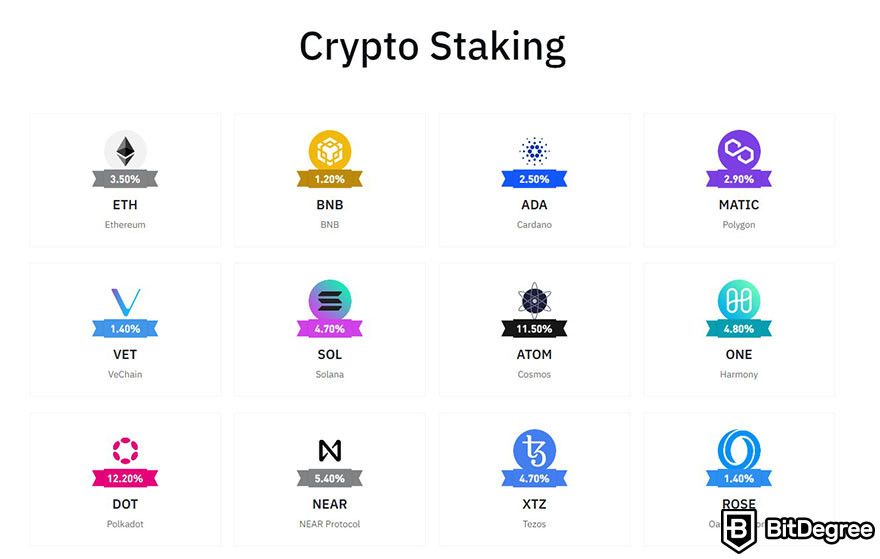
Also, review the staking rewards: what percentage can you expect to earn annually? And don’t forget about the staking conditions—some cryptos might require longer lock-up periods or have higher minimum staking requirements, which could impact your liquidity.
Taking the time to research and select the right crypto can make your crypto staking journey much more rewarding and aligned with your financial strategies.
Selecting a Staking Platform or Running Your Own Validator
When you decide to start staking crypto, one of the crucial choices you'll face is whether to stake through a platform or run your own validator. Each option has its unique benefits and requirements, so it’s essential to weigh these based on your expertise, resources, and commitment level.
Staking crypto through a platform is the more straightforward approach. Many crypto exchanges like Binance, Kraken, and Coinbase offer staking services where you can easily delegate your coins to a validator operated by the platform. This method is user-friendly and doesn't require technical knowledge or significant upfront investment.
It's a great way to get started with staking crypto without the hassle of managing hardware and software. Plus, it allows you to earn staking rewards with minimal effort, although fees can sometimes eat into your earnings.
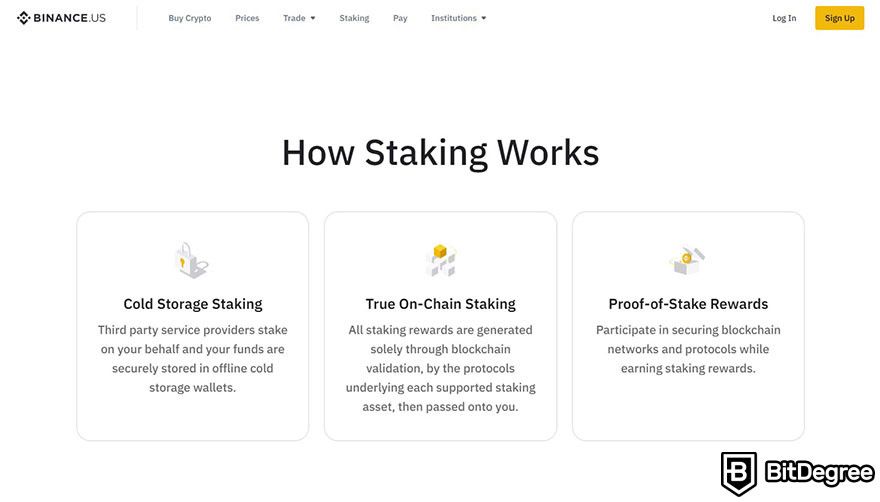
On the other hand, running your own validator for staking crypto offers greater control and potentially higher rewards. When you operate your validator, you participate directly in the network, maintaining the blockchain's security and operations. This requires a good understanding of the technology, reliable internet, and sometimes significant computational resources. The stakes are high, as any misstep can lead to slashing penalties.
Ultimately, the choice between using a staking platform or running your own validator depends on how deep you want to dive into the mechanics of staking crypto. If you're new to crypto staking, starting with a trusted platform might be the way to go, gradually building up your knowledge and confidence before potentially running your own validator.
Setting up a Crypto Wallet and Hardware or Software
Setting up a crypto wallet and acquiring the necessary hardware or software is a fundamental step in starting your journey with staking crypto. First off, a crypto wallet isn't just a place to store your digital assets; it's also your access point for participating in blockchain activities, including staking crypto.
You'll typically need a wallet that supports the specific cryptocurrency you plan to stake and offers staking capabilities. There are two main types of wallets to consider: software wallets and hardware wallets.
Software wallets or hot wallets, are applications you can download to your computer or smartphone. They are user-friendly and easily accessible, making them a popular choice for beginners in crypto staking. However, they are considered less secure than hardware wallets because they are connected to the internet.

Hardware wallets or cold wallets, on the other hand, are physical devices that store your cryptocurrencies offline. They offer enhanced security by keeping your private keys physically separate from the online environment, significantly reducing the risk of hacking. Setting up a hardware wallet involves purchasing the device, initializing it, and then transferring your crypto assets to it.
Additionally, if you decide to run your own validator, you'll need more advanced hardware and potentially specific software, depending on the blockchain network you're supporting. This could include a dedicated computer with a high-speed internet connection and continuous uptime to ensure you meet the network's validator requirements.
Remember, the choice of crypto wallet and hardware will largely depend on the balance you wish to strike between convenience and security in your crypto-staking activities.
Review of Popular Crypto Staking Platforms
As I mentioned earlier, staking crypto on a trusted platform is preferable due to its convenience and security. To help you decide where to start, here are the three best crypto-staking platforms with massive user bases and great reputations:
Binance
Binance as one of the most popular crypto exchanges in the industry offers ways for staking crypto through Binance Earn. This platform lets you earn interest on your idle assets, with a wide variety of staking, farming, and dual investment products available.
There are three different Principal Protected Products when staking in Binance that allow you to earn rewards with flexible or locked terms. These products provide principal protection in terms of token value, which means that you can earn benefits without risking your initial investment.

The Principal Protected Products include:
- Simple Earn – a one-click staking solution that lets you earn rewards on over 300 digital assets. You can choose between a Flexible or Locked deposit period.
- BNB Vault – BNB Vault offers flexibility and competitive returns. You can deposit and redeem BNB from BNB Vault at any time and earn both Flexible Product rewards and Launchpool rewards.
- ETH Staking – this feature lets you easily stake ETH in one click and receive BETH tokens at a 1:1 ratio. You can stake from 0.0001 ETH and earn daily on-chain rewards.
Aside from those three products, Binance Earn also offers high-yield products that allow you to receive higher-than-average gains but with corresponding risks to your invested cryptocurrencies. Finally, there is Binance DeFi Staking where you can participate in certain DeFi products and obtain realized earnings.
Coinbase
You can participate in crypto staking on Coinbase by joining the Coinbase Earn program. One of the benefits of using Coinbase Earn for staking crypto is its convenience. This platform allows its users to unstake any time they want.
There is no fee for staking or unstaking, as the fee demanded by Coinbase is based on the rewards only. Additionally, investors may contribute with any amount they desire, as long as they acquire the minimum balance of the asset. At the time of writing, Coinbase Earn supports 120 assets, including USDC, ETH, and SOL. Coinbase claims you can earn up to 10% APY on your crypto investment in this program.
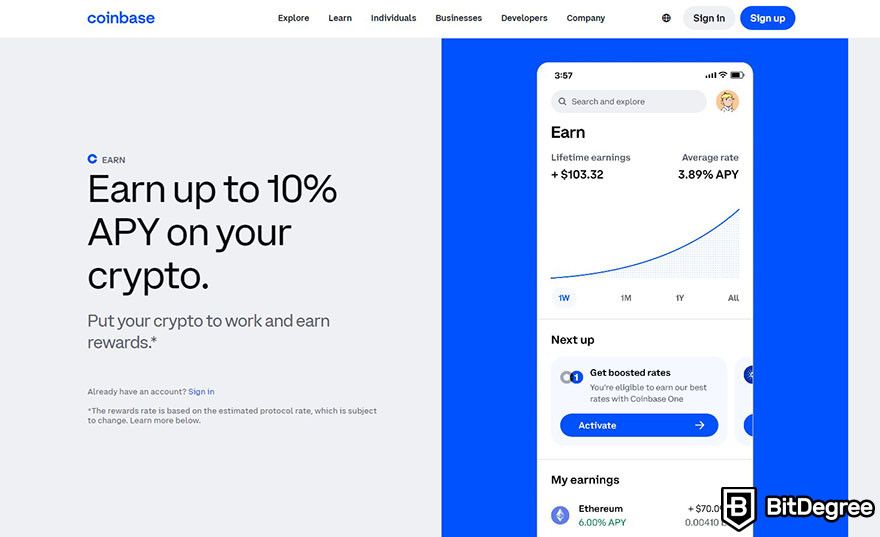
Another strong point of Coinbase Earn is its security. Coinbase claims it implements measures to mitigate risks and allows you to opt out anytime. Keep in mind that some protocols may require you to wait until unstaking is complete to transfer or sell your assets.
Kraken
Kraken is a popular crypto exchange that offers easy on-chain staking with minimal limitations. Currently, the platform offers on-chain staking for the 19 blockchains, including ETH, SOL, and ATOM.

Just like the other two exchanges in this list, Kraken staking also offers both flexible and fixed-period staking. You will receive rewards twice a week from your staked assets with up to 24% APY depending on the asset. Keep in mind that this staking feature is not available for US users due to regulatory reasons.
Best Practices for Secure Staking
Security is a core element in any digital transaction activities including staking crypto. Therefore, it is important to understand the necessary measures to protect your device from potential cyberattacks. Take a look at these security tips that will give you peace of mind while participating in crypto staking activities.
Tips on Securing Your Staking Setup
Securing your crypto staking setup is crucial to protect your digital assets and ensure your staking efforts are successful. Here are some practical tips to enhance the security of your staking crypto activities:
- Use a hardware wallet: When staking crypto, store your assets in a hardware wallet. These wallets keep your private keys offline, significantly reducing the risk of hacking.
- Secure internet connection: Always use a secure and private internet connection for your crypto staking activities. Avoid public Wi-Fi networks which can be vulnerable to security breaches.
- Regular updates: Keep your wallet software and any related crypto-staking applications up to date. Developers regularly release updates to patch security vulnerabilities.
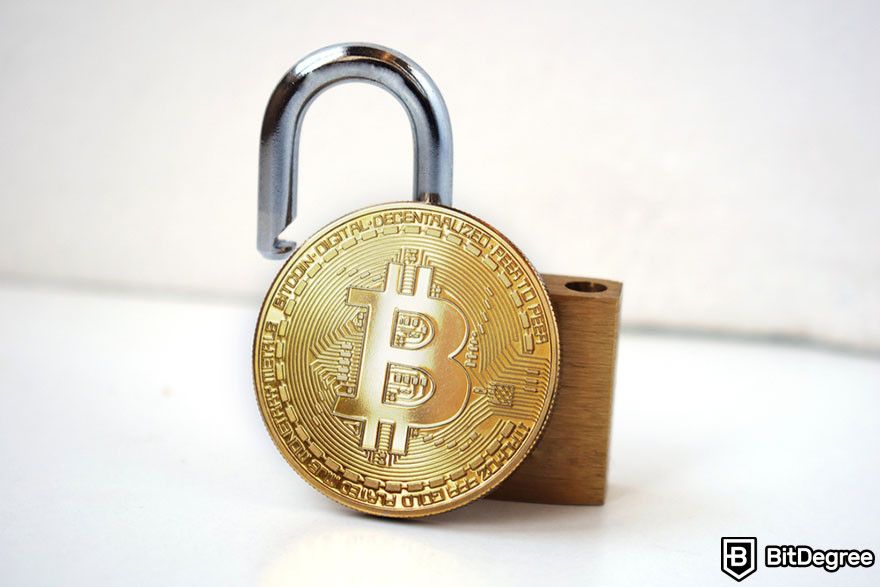
- Strong passwords and 2FA: Use strong, unique passwords for your wallet and any staking platforms. Additionally, enable two-factor authentication (2FA) for an added layer of security.
- Regular software updates: Always ensure your wallet and any staking software are up-to-date. Developers frequently issue security patches that can protect you from new vulnerabilities. Not updating is like leaving your door unlocked—it’s an invitation to trouble.
- Backup your keys: Regularly back up your private keys and store them in multiple secure locations. If your device fails, these backups will be your lifeline to accessing your staked assets.
By following these tips, you can help ensure that your crypto staking setup remains secure, protecting your investments and maximizing your returns.
Using Hardware Wallets for Increased Security
Using hardware wallets is one of the most effective steps you can take to secure your crypto staking setup. Here’s why they’re a must-have for anyone serious about staking crypto:
- Enhanced security: Hardware wallets store your private keys offline, which drastically reduces the risk of online threats like hacking or phishing attacks. It’s like keeping your digital gold in a vault.
- Control over your assets: With a hardware wallet, you have full control over your cryptocurrencies. Unlike online wallets, you're not reliant on a third party's security measures to protect your staked assets.
- Reliability: These devices are built to withstand attacks, both digital and physical. They are a robust form of security for anyone staking crypto.
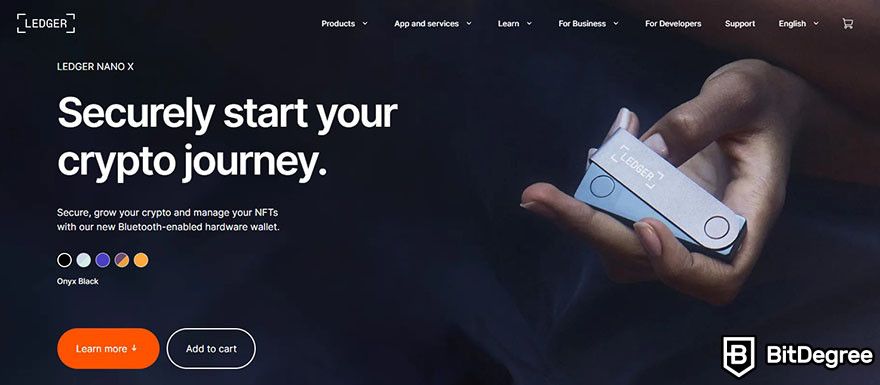
One standout example is the Ledger Nano X. It’s renowned for its ease of use, compatibility with multiple cryptocurrencies, and robust security features. This makes it an excellent choice for both seasoned stakers and newcomers to crypto staking.
Future of Staking in Crypto
The staking landscape is constantly evolving, with several emerging trends that are shaping the future of how we approach staking crypto. Here’s a quick look at what’s on the horizon:
- Increased adoption of Staking-as-a-Service (SaaS): As staking crypto becomes more mainstream, more services are popping up that handle the complexities of staking for you. These platforms offer a hands-off approach to staking crypto, making it accessible to a broader audience who may not have the technical expertise.
- Growth in cross-chain staking solutions: With the proliferation of multiple blockchains, the demand for cross-chain staking solutions is on the rise. This allows for staking assets across different blockchains, increasing the flexibility and potential staking rewards.
- Enhanced focus on security: As the stakes (pun intended!) get higher, so does the emphasis on securing staking protocols. Expect to see more advanced security measures being implemented to protect staking crypto.
- Eco-friendly staking options: With environmental concerns becoming more prominent, many are turning towards more energy-efficient options for staking crypto. This trend is likely to continue as sustainability becomes a bigger part of the crypto conversation.
These trends suggest a dynamic future for staking crypto, where ease of use, security, and eco-consciousness drive innovation in the space.

- Secure and reliable
- Accepts fiat currencies
- Lots of trading options
- Reputable exchange
- Accepts fiat currencies
- Offers various trading options

- Huge trading variety
- Regulation-compliant around the globe
- Fair trading fees
- Beginner-friendly
- A wide array of features
- Vast number of different crypto coins & tokens

- Beginner-friendly
- Secure
- Decent trading and withdrawal fees
- Crypto.com Visa Card
- Automated tools & bots
- Ecosystem synergy with CRO
Potential Regulatory Changes and Their Impacts
Navigating the world of staking crypto can get quite complex, especially with potential regulatory changes on the horizon. Governments and regulatory bodies worldwide are beginning to take a closer look at crypto staking, given its rise in popularity and its significant financial implications.
For instance, in the United States, the Securities and Exchange Commission (SEC) has hinted at increased scrutiny of cryptocurrencies, particularly those that might be considered securities. If regulations tighten, staking crypto could see more stringent compliance requirements, which could impact how easily individuals and platforms can offer staking services.
This could lead to a more restricted environment, potentially reducing the accessibility and attractiveness of staking crypto for casual investors.

In Europe, the Markets in Crypto-Assets (MiCA) regulations aim to harmonize the regulatory landscape for crypto assets across the EU. Depending on how staking services are classified under these rules, platforms might need to obtain specific licenses, which could increase their operational costs—these might then be passed on to users in the form of lower staking rewards.
On the flip side, clear regulations could also legitimize staking crypto, attracting more institutional investors and potentially leading to greater stability in the market. Overall, while the regulatory landscape remains a moving target, its development will undoubtedly play a crucial role in shaping the future of staking crypto and how it is practiced globally.
Conclusion
Staking crypto has clearly established itself as a compelling method for earning passive income while contributing positively to the blockchain ecosystem. The beauty of staking crypto lies not only in the potential to earn staking rewards but also in its ability to improve the functionality and security of blockchain technology.
Compared to more speculative crypto investment methods, staking presents a less risky option, offering a more stable return in many cases.
However, it's crucial to remember that while staking crypto can be profitable, it is not without its risks. Thorough due diligence and effective risk management are essential to navigate this space successfully. Understanding what is staking crypto, how it works, and the specific terms and conditions of the staking options are key steps before diving in.
For those looking to explore this opportunity, platforms like Binance, Kraken, and Coinbase are popular choices that offer various staking options. Each of these platforms provides unique features and benefits, catering to both novice and experienced stakers.
So, whether you're looking to grow your crypto portfolio or simply explore new avenues within the blockchain space, staking crypto might just be the venture worth considering.
The content published on this website is not aimed to give any kind of financial, investment, trading, or any other form of advice. BitDegree.org does not endorse or suggest you to buy, sell or hold any kind of cryptocurrency. Before making financial investment decisions, do consult your financial advisor.
Scientific References
1. Cong L. W., He Z., Tang K.: 'The Tokenomics of Staking';
2. Gupta H., Chaudhary R.: 'An Empirical Study of Volatility in Cryptocurrency Market'.




